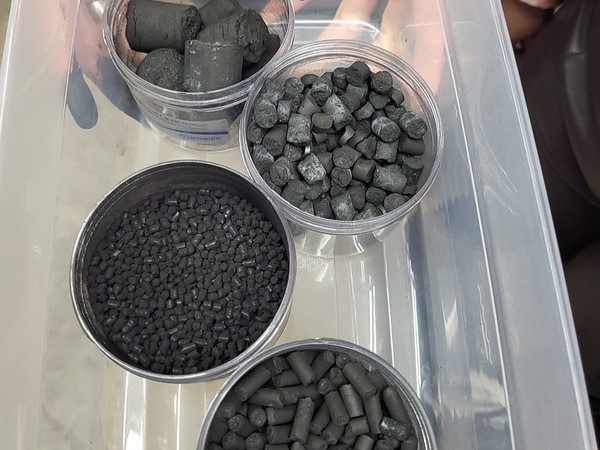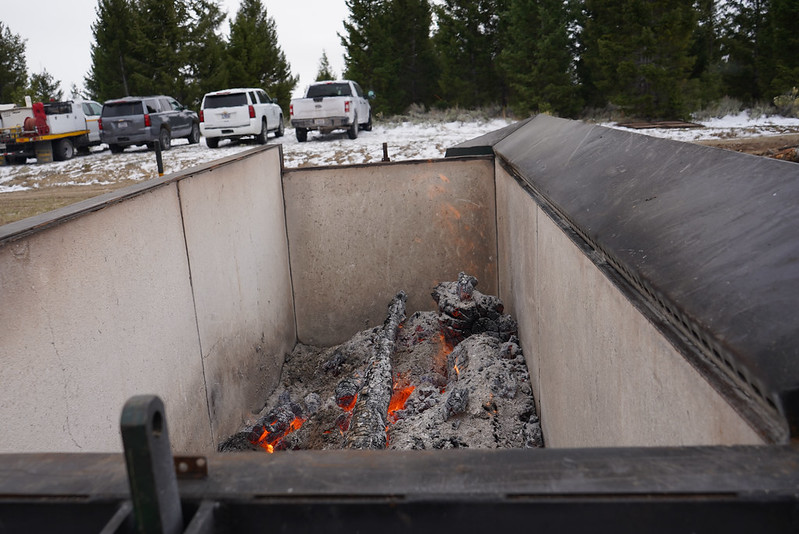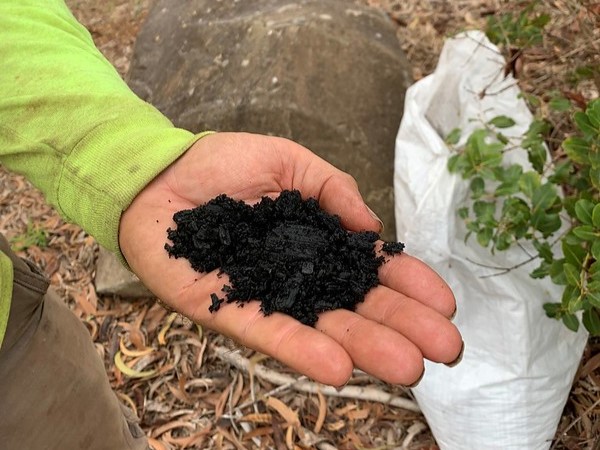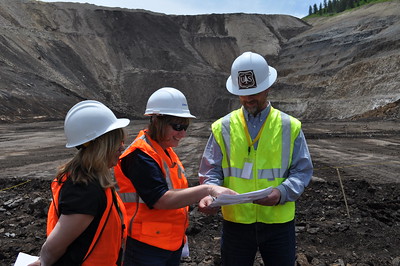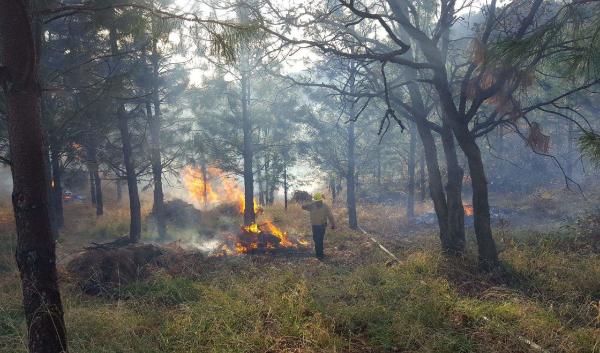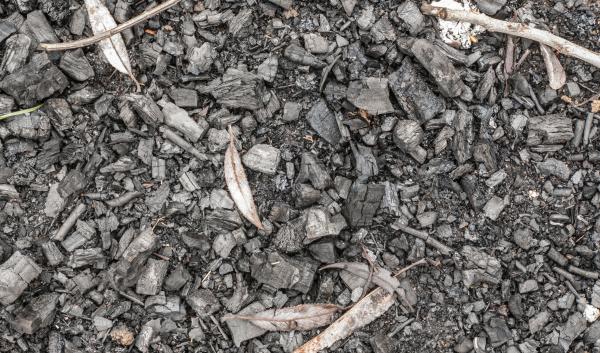Estimated reading time: 3 minutes
Globally, biochar has been used for years as a soil amendment, but research on its properties and potential benefits have recently gained the attention of foresters and agricultural producers. Biochar is a stable solid, rich in carbon, that is made from organic waste material or biomass that is partially combusted in the presence of limited oxygen. The qualities that make up biochar vary depending upon the material that it comes from (feedstocks; i.e., timber slash, corn stalks, manure, etc.) and the temperature at which combustion occurs. The various materials and methods to produce biochar result in a wide variety of chemical and physical properties across biochar products. To understand the properties of biochar, a user should know 1) what it was made from (i.e. the feedstock), and 2) the temperature at which it was made (i.e. 300-700C).
A common attribute among all types of biochar is the primary ingredient: a recalcitrant carbon that can persist in soils for years or decades, and even millennia. Biochar can be used as a soil amendment by itself, or it can be blended with other soil amendments to address a wide range of environmental, agricultural, and forestry challenges. Research underway by the USDA Forest Service, USDA Agricultural Research Service, the Environmental Protection Agency, and others will provide insight into how effective biochar is at binding with heavy metals and chemicals from agricultural and road runoff for the purpose of environmental remediation. Applications of biochar include improving soil health, raising soil pH, remediating polluted soils, sequestering carbon, lowering greenhouse gas emissions, and improving soil moisture. Know your soil amendment goal(s), to determine which biochars are best to achieve your goals.
The Pacific Northwest Biochar Atlas is an online platform that helps users choose a biochar to suit soil health goals. In addition, the Atlas provides details about the benefits of biochar, case studies of over half a dozen example operations implementing biochar across the region, and a map of biochar producers to simplify access for interested users. These and other features of the Atlas help to improve information exchange, continuing education, and biochar accessibility for the Northwest.
Biochar Factsheets
Role of biochar made from low-value woody forest residues in ecological sustainability and carbon neutrality. 2025. Dipita, G., D.S. Page-Dumroese, H.-S. Han, N. Anderson. Soil Science Society of America Journal. 89: e20793.
Biochar Is Ready for Prime Time: Ground-truthed decision trees for land managers. 2024. Page-Dumroese, D.S., J. Archuleta, J. Black, A. Bidwell, P. Donnellon, K. Hoffman- Krull, M. Long, D. McAvoy, J. Parker, K. Wilson. Science You Can Use Bulletin Issue 70.
Beyond the basics: a perspective on barriers and opportunities for scaling up biochar production from forest slash. 2024. Pierson, D., N. Anderson, J. Brewen, N. Clark, M.C. Hardy, D. McCollum, et al,. Journal of Biochar, 6: 1.
Biochar Basics: An A-Z Guide to Biochar Production, Use, and Benefits. 2020. Page-Dumeroese, D. S., N. Anderson, D. McCollum, J. Archuleta, J Salix. Science You Can Use Bulletin Issue 54.
Techno-economic analysis of producing solid biofuels and biochar from forest residues using portable systems. 2019. Sahooa, K., E. Bileka, R. Bergmana, S. Manib. Applied Energy 235: 578-590
Soil greenhouse gas, carbon content, and tree growth response to biochar amendment in western United States forests. 2019. Sarauer, J.L., D.S. Page-Dumroese, M.D. Coleman. Bioenergy 11: 660-671.
Financial viability of biofuel and biochar production from forest biomass in the face of market price volatility and uncertainty. 2018. Campbell, R.M., N. Anderson, D.E. Daugaard, H.T. Naught. Applied Energy 230: 330-343.
Biochar Can Be a Suitable Replacement for Sphagnum Peat in Nursery Production of Pinus ponderosa Seedlings. 2018. Dumroese, R.K., J.R. Pinto, J. Heiskanen, A. Tervahauta, K.G. McBurney, D.S. Page-Dumroese, K. Englund. Forests 9: doi:10.3390/f9050232
Idaho forest growth response to post-thinning energy biomass removal and complementary soil amendments. 2018. Sherman, L.A. , D.S. Page-Dumroese, M.D. Coleman. Bioenergy 10: 246-261
Creating a Biochar Roadmap. Trippe, K., C. Phillips, K. Spokas, T. Miles 2018. CSA news. doi:10.2134/csa2018.63.1021
Biochar boosts tropical but not temperate crop yields. Jeffery, S., D. Abalos, M. Prodana, A. C. Bastos, J. Willem van Groenigen, B. A. Hungate, F. Verheijen. 2017 Environmental Research Letters 12: 053001
Using organic amendments to restore soil physical and chemical properties of a mine site in northeastern Oregon, USA. 2018. Page-Dumroese, D. S. , M. R. Ott, D. G. Strawn, J. M. Tirocke Applied Engineering in Agriculture 34: 43-55.
- US Forest Service Rocky Mountain Research Center's biochar page
- Case studies of farms and ranchers using biochar across the Northwest
- An Oregon Natural Resources Conservation Service (NRCS) Conservation Innovation Grant success story that is improving soils and economic opportunity. This success is also conveyed as a story map, Innovations in Biochar, detailing how land owners and agencies are working together to turning woody debris into economic and environmental opportunity in southern Oregon.
- Waste to Wisdom is a Department of Energy funded program that publishes reports, webinars, and general information about innovative biomass energy production in the United States.
-
Using Woody Biomass for Fuel and Energy in the Northwest
Leftover wood from harvest and fuel treatments can be a sustainable source of energy in the Northwest.
-
Using Woody Biomass Waste: Hand-Built Biochar Piles
Hand-built biochar piles provide a cost-effective soil amendment that can improve soil health and store carbon.
-
Pacific Northwest Biochar Atlas
The Pacific Northwest Biochar Atlas is a regional resource for biochar users and producers.


